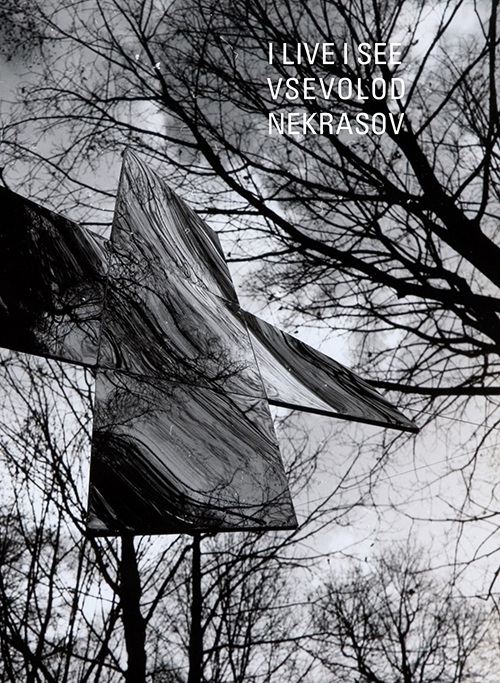Ugly Duckling Presse 2018
232 3rd St #E-303
Brooklyn NY 11215
347-948-5170

I Live I See: Selected Poems
Vsevolod Nekrasov
Translated by Ainsley Morse, Bela Shayevich
Mikhail Sukhotin, Contributor
Gerald Janecek, Contributor
June 2013
but in the meanwhile it’s life
how’s life
well you know how it goes
however it seems
it goes on
or
it goes back and forth
sometimes it’s
like life
sometimes it’s like
what kind of life is this
this is just vile
these fragments are brain signatures...inside a difficult time and place
Aram Saroyan
I Live I See presents a comprehensive survey of the work of Vsevolod Nekrasov (1934-2009), the Soviet literary underground’s foremost minimalist. Exploring urban, rural, and purely linguistic environs with an economy of lyrical means and a dark sense of humor, Nekrasov’s groundbreaking early poems rupture the stultified language of Soviet cliché while his later work tackles the excesses of the new Russian order. I Live I See is a testament to Nekrasov’s lifelong conviction that art can not only withstand, but undermine oppression.
I Live I See: Selected Poems is the first collection of Nekrasov’s work in English translation.
Preface by Mikhail Sukhotin. Afterword by Gerald Janecek. Translator’s note by Bela Shayevich and Ainsley Morse.
About the Author
Vsevolod Nekrasov (1934-2009), a lifelong resident of Moscow, became active in the literary and artistic underground in the late 1950s. Through the fall of the Soviet Union, his work only appeared in samizdat and European publications. At the beginning of his career, Nekrasov was associated with the experimental writers and artists of the Lianozovo group, and went on to become one of the founding members of Moscow Conceptualism.
Nekrasov’s poetry, which is often characterized as minimalist, uses repetition and paranomasia to deconstruct and recontextualize his linguistic environment—he targets everything from stock Soviet political mottos to clichés people mutter to one another in everyday situations. For example, by juxtaposing phrases the average Soviet citizen would have taken for granted with arbitrary-seeming homophones, Nekrasov calls official Soviet language to task for the numbness and thoughtlessness it promotes. When not overtly political, his poems examine this same tension between ‘outward speech’ and ‘inward speech,’ that is, between the language we use when talking to others and talking to ourselves.
Praise
Nekrasov's artistic method is a sort of critique of poetic reason, only the result of the critique is poetry; the dissected, devalued verse line is reborn -- into lyric.
Vladislav Kulakov
I’m fascinated that [Nekrasov] was doing these works in Soviet Russia while similar kinds of work developed in the—relatively—free world. I really like the poems, whic h do intersect with word art shown in galleries like Barbara Kruger’s. But there’s something in N ekrasov that pushes the envelope in a new way, like these fragments are brain signatures, psycholo gical reflexes, inside a difficult time and place.
Aram Saroyan
About the Translators
Ainsley Morse has been translating 20th- and 21st-century Russian and (former-) Yugoslav literature since 2006. She teaches Russian language and literature at Dartmouth College. Previous UDP publications include the co-translation of Vsevolod Nekrasov (with Bela Shayevich, UDP 2013) and Kholin 66: Diaries and Poems (also with Shayevich, 2017). Other recent translations include the farcical Soviet pastoral Beyond Tula, by Andrey Egunov, and a collection of theoretical essays by the brilliant Formalist Yuri Tynianov. Coming up is the macabre modernist prose of Konstantin Vaginov and a number of contemporary Russian women poets.
Bela Shayevich is a Soviet-American artist and doer of the word. She is the translator of Second-Hand Time by Svetlana Alexievich. For UDP she has co-translated I Live I See by Vsevolod Nekrasov, Kholin 66: Diaries & Poems by Igor Kholin, and It’s No Good by Kirill Medvedev.
About the Contributors
Mikhail Sukhotin is a poet and literary critic. His books of poetry include Velikany [Giants] (1995) and Tsentony i marginalii [Pastiches and marginalia] (2001). His research on Nekrasov was indispensable to the UDP edition, I Live I See, which includes his preface. More poems and scholarly work, including a number of articles on specific aspects of Vsevolod Nekrasov's poetics, can be found on his webpage. He lives in Moscow.
Gerald Janecek is Professor of Russian Emeritus at the University of Kentucky, and the author of The Look of Russian Literature, Zaum: The Transrational Poetry of Russian Futurism, Sight and Sound Entwined: Studies of the New Russian Poetry, as well as multiple scholarly articles. He has translated Andrei Bely, Vsevolod Nekrasov, Vladimir Aristov, and other Russian poets. The first to translate Vsevolod Nekrasov into English, he devotes a chapter of his book on Moscow Conceptualism to the poets’s minimal and visual works, and his reminiscences of their meetings are provided in the afterword to the UDP edition of Nekrasov’s selected poems, I Live I See.
In the News
Links
Publication Details
ISBN: 978-1-933254-98-2
Trade Paperback
Smyth-sewn. 576 pp, 4.75 x 6.5 in
Publication Date: June 01 2013
Distribution: Asterism Books (US)
Series: Eastern European Poets Series #31

